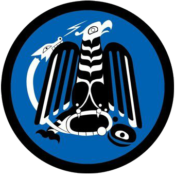We are the c̓išaaʔatḥ
We are the c̓išaaʔatḥ (Tseshaht First Nation) a vibrant community with an active and progressive natural resources-based economy. We are one of the 14 Nations that make up the nuučaan̓uł (Nuu-chah-nulth people) of western Vancouver Island. We are proud of our culture and work as a community to preserve our traditional values and teachings.
At the core of Tseshaht culture is our chronicle of creation; our spiritual origin. We were created at c̓išaa, a place on what is known today as Benson Island, one of the Broken Group Islands in Barkley Sound. It is here n̓aas (creator) granted our first ancestors (Tseshaht man and woman) the highest spiritual responsibility and stewardship of the Broken Group Islands. Tseshaht translates as “people of a rancid smelly place” because the inhabitants were such great whalers and their village reeked of whale oil, signifying great wealth.
The end meaning of ʔatḥ or ahtah literally means “people of c̓išaa” or c̓išaaʔatḥ
Our ownership of land is based on the nuučaan̓uł laws of ḥaḥuułi, which means the territory of a nation under the stewardship of a ḥaw̓ił (King). This position was hereditary as the senior representative of the spiritual bloodline most closely linked to our chronicle of creation. Our most recent ḥaw̓ił was Adam Shewish, a traditionally trained ḥaw̓ił, who passed away in 1990. His great-grandfather Chief haayuupinuuł, (born c.1830) was the ḥaw̓ił of the Tseshaht when European settlement started in the Alberni Valley. His name meaning “getter of ten (whales)” signified his status as a prominent chief, including his King’s right to hunt whales.
Tseshaht ḥaḥuułi changed over time through marriage and alliances, warfare, and the incorporation of affiliated groups. These ḥaḥuułi enhancements continued by increasing the land controlled. The Tseshaht absorbed the hiikuułʔatḥ and the ḥačaaʔatḥ who brought their lands with them as well as the once independent territories of the našɁasɁatḥ, maqƛiiʔatḥ, c̓uumaʕasatḥ and the original c̓išaaʔatḥ.
Eventually Tseshaht lands included the ḥaḥuułi of the assimilated groups in the Broken Group Islands, central Barkley Sound, much of Alberni Inlet, and the Alberni Valley.
The ownership and use of these lands and practically everything of value in Tseshaht society were governed by tutuupata (the plural of tupaati), a complex set of hereditary privileges or prerogatives. Tutuupata instructed the ways in which both economic resources like rivers, fish trap sites, and plant gathering sites, as well as intellectual property resources like names, ceremonial songs, dances, and regalia should be owned and utilized. Tutuupata determined rank in Tseshaht society and were inherited within a family.
Tseshaht Seasonal Round
The traditional Tseshaht economy was determined by tupaati – the ownership and use of resources. Tseshaht tupaati included both “outside” and “inside” resources throughout this territory. After amalgamations of the various groups had occurred the Tseshaht had a much larger territory and a broader resource base.
This meant that in late winter and early spring the Tseshaht travelled to their “outside” tupaati to utilize the resources of these traditional sites and procurement areas in Barkley Sound. These included sea mammals, halibut, rockfish and salmon. Resources changed along with the seasons and the Tseshaht moved back to their “inside” tu– paati, following the salmon up Alberni Inlet to the Somass River.
The Tseshaht now assert our jurisdiction over our ḥaḥuułi based on our history.
